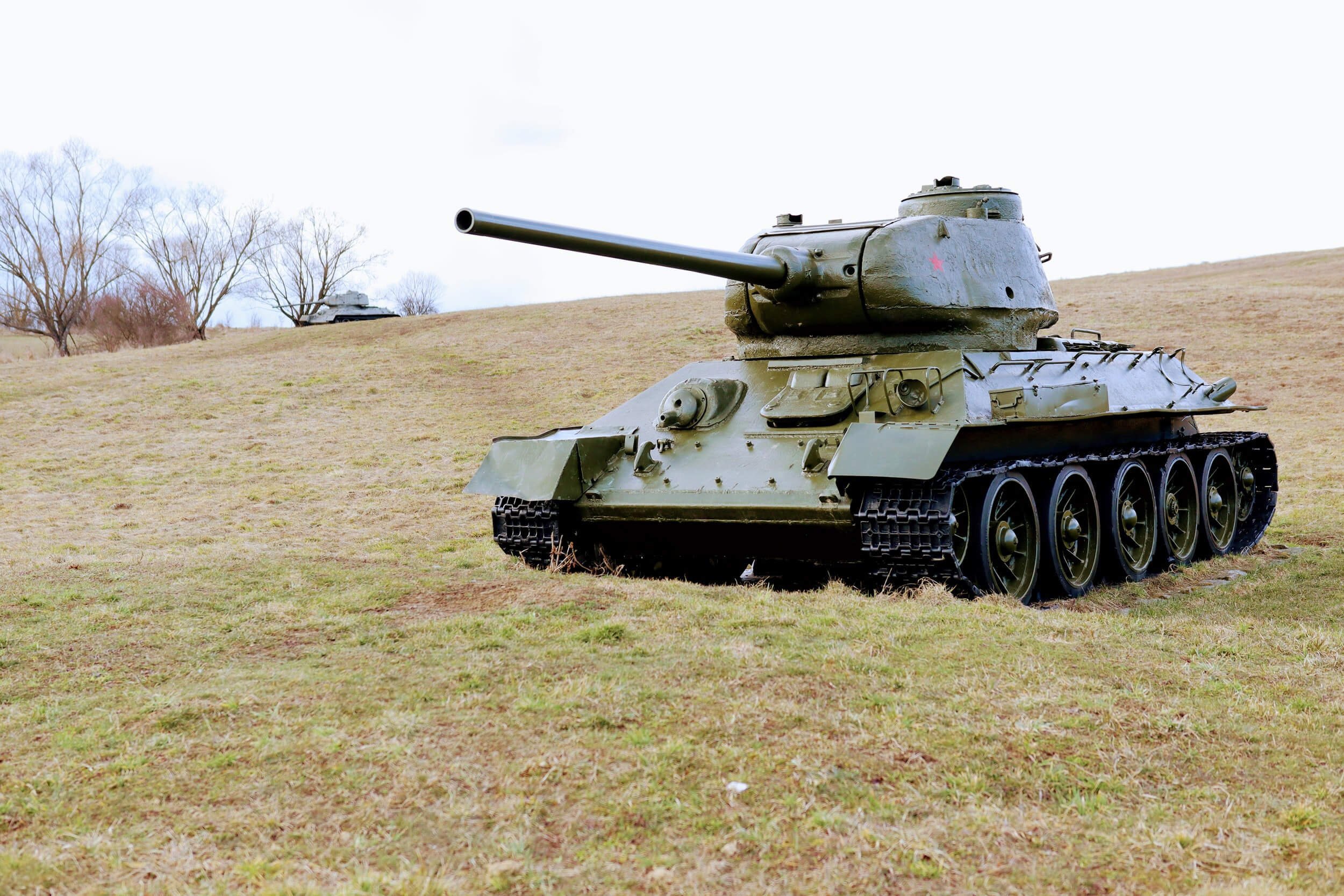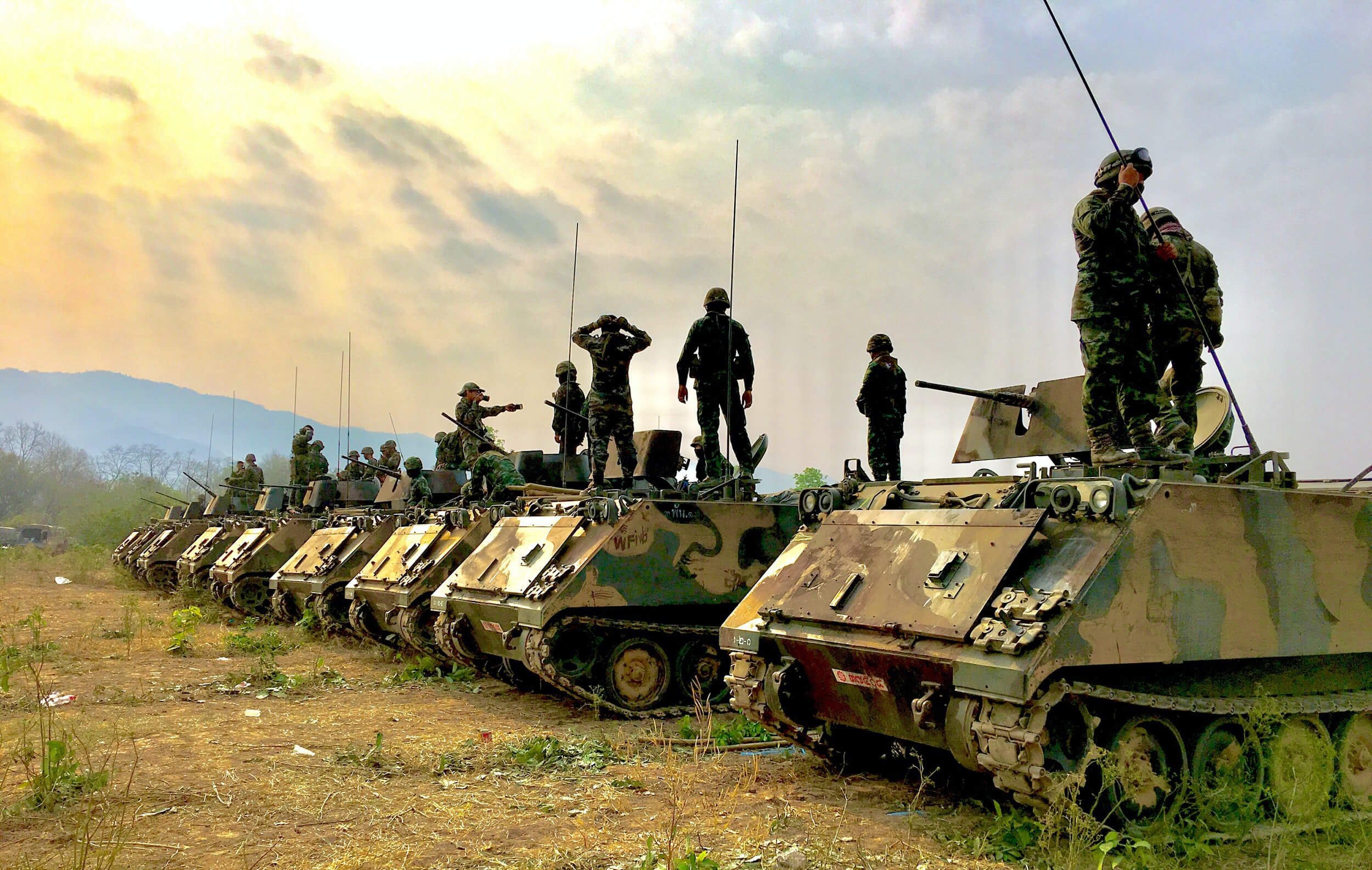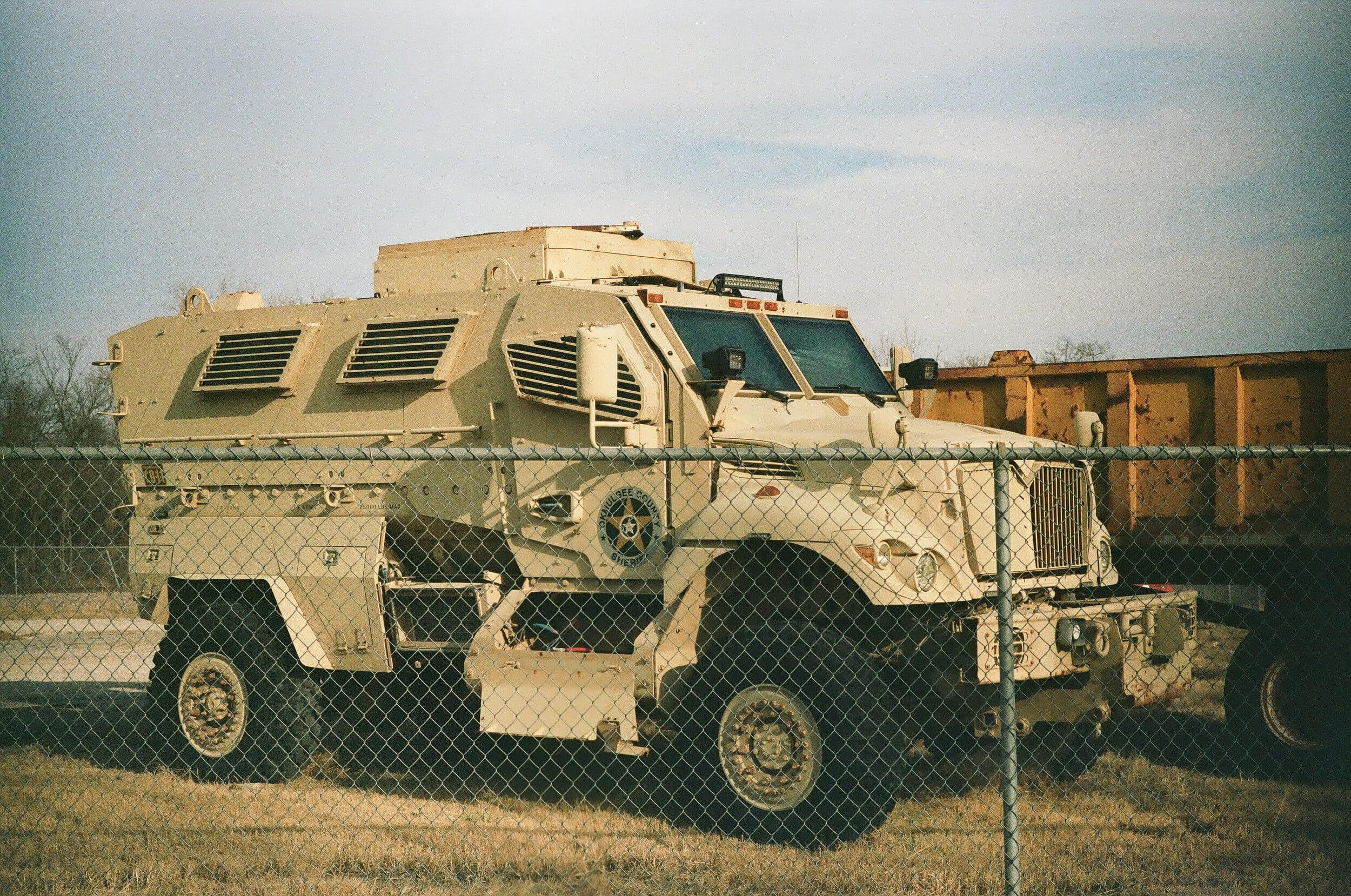Ever since our childhood, particularly for boys, we’re hard-pressed to think of a time when we did not daydream at least once about driving our own personal tank around. There is nothing practical about it; it is the same energy as driving a pickup on 44” tires with a foot of lift. It is all about the rush of driving a tank, plain and simple.
Register Your Army Tank Now!
Register Your Army Tank Now!
Buying and driving surplus army trucks is nothing new; in fact, it has been trendy for decades, from volunteer fire departments to farmers and ranchers, to enthusiasts who keep them for historical value and fun. But there is a big difference between driving a surplus HMMWV and driving a tank. But if a tank is what you want, and your goal is a tank to drive on the roads, then let’s explore how to make a tank street legal in the United States.
What Exactly Is A Tank?
We all have a good sense of a tank; it is an armored military vehicle armed with a large main gun affixed to a rotating turret. But, strategically, they are employed by ground forces (Army and Marines) as a primary offensive weapon in ground combat strategy and doctrine. The Army itself states the purpose of armor better than I can: “The role of the Armor company is to fight and win engagements through speed, firepower, and shock effect.”
As technology has advanced, so has the main battle tank. Once lumbering and slow, basically a stationary target that could take enormous amounts of small arms fire while providing cover for mechanized infantry, main battle tanks are now really the tip of the spear. They lead mechanized infantry companies straight into the fray, seeking out and pulverizing other tanks, artillery, and reinforced positions—pretty cool stuff.
By necessity, tanks are heavy: today’s M1 Abrams main battle tank tips the scales at nearly 68 tons. The M60 it replaced weighs anywhere from 50 tons to nearly 55 tons. In addition, tanks are equipped with massive, rifled cannons and usually two or three light machine guns for anti-personnel operations. For reference, fully-loaded semis in the United States are limited to just 40 tons.
Concerns with Driving Tanks on Roads
That brings us to two of the jarring realities of driving a tank on public roads, especially if you want to do it with regularity: weight and traction.
An M60 main battle tank has an empty weight of roughly 50 tons (100,000lbs), which exceeds the national maximum gross vehicle weight rating of 80,000lbs by ten tons. Since the armor is integral to the function and design of the tank, it is doubtful that you can pair it down any.
If you did make a tank street legal, you would need to keep a close eye out for situations where your tank could cause damage you might be liable for. These include:
Overpasses with low clearances
Bridges with low weight ratings
Older streets with cobblestone or brick surfaces
Cliffside streets and fire roads
To be very frank, before going any farther, wheeled APCs are flatly going to be your best option for a street-legal “tank.” A tank with tracks is too heavy for legal roadways, and the tracks are far too hard on, well, everything to consider them a viable option.
Driving a tracked vehicle on the roadways is not expressly forbidden nationwide, but in some areas, only farm vehicles are allowed to have them. Some agriculture tractors use exclusively track drive systems and have operating weights nearing thirty tons, and these tractors often use public roads. Since they are slow-moving vehicles under 25 MPH, hazard lights and the slow-speed triangle are sufficient to prevent legal infractions. But the rules are very hazy for farm equipment, varying wildly from state to state. I bring this up because heavy, slow farm equipment is the closest thing to a tank we will see on the roads today, and they have no requirement to be registered or tagged in most cases.
But also, a tank makes a terrible road vehicle because they were never intended to be used on roads in the first place. At the very, very least, you would have to get custom rubber tracks built for your tank before you even consider taking it on the road; the factory steel-rubber hybrid tracks will annihilate asphalt.
Armored Vehicle Categories
The world of military armor is not made up specifically of military tanks. The armored and mechanized infantry companies are made up of a mix of armored and thin-skinned assets; they are made up of up-armored HMMWVs, armored personnel carriers (APCs), 2 ½-ton and 5-ton trucks, tanks, and a few other vehicles. Without going into the weeds too much, we’ll talk about the main types of armored vehicles and whether they are theoretically suitable for road use.
Of course, if your name is Kanye and you have a thing for expensive toys, a Ripsaw will give you most of the fun of a tank while being a lot easier to drive and less damaging to roads. It also has familiar controls and familiar dimensions, and it’s easier to make a Ripsaw street legal.
If you’re dead-set on the real thing, let’s look at your best options.
Armored Personnel Carrier
A crew of classic M113s, ready to roll.
The army has two main series of APCs that it has used for a very long time. Since before the Vietnam War, the M113 has been in continuous use, making it the longest-serving frontline vehicle in continuous service. The M113 is not a frontline vehicle anymore but is still used in large numbers as a support vehicle.
APCs are also wheeled vehicles, with many thousands of units produced by the Russians, Czechs, and Poland, and also in use with many western forces. The typical Russian units and the Polish OT-64 can easily be acquired on the open market. A wheeled APC is a viable option for tagging and driving on public roads. First, they are quite a bit lighter than a tracked APC; the OT-64 only weighs about fifteen tons spread across eight tires, making it a natural vehicle for public roads. It is also one of the more economical army tanks you will find and examples are readily available, although you will probably have to ship one in from Europe or wait for a stateside example to come up for sale.
Self-Propelled Gun
This is technically not a tank but an artillery piece. Standard artillery pieces are large and bulky towed units that are hard to move, so the idea here was to put that artillery piece on a tracked or wheeled platform so it could move quickly.
A few wheeled options on the open market are acceptable on public roads and make a great conversation piece. For example, the Czech SHKH VZ.77 DANA has an empty weight of just over 29 tons, so it hits the road lighter than most over-the-road semi-trucks.
Missile Launcher
These are technically artillery pieces, but mobile rocket launchers have been battlefield staples since World War II. They are a standoff weapon system that can flatten predetermined areas and rockets do not need to be reloaded like an artillery cannon after each shot. Instead, the vehicle is loaded with a complement of rockets. It can unload a whole load of rockets in moments and then drive off before its position is identified. These trucks are armored but have thin skin intended to keep the crew safe from small arms fire.
With that being said, these are also available in a demilitarized condition, and to the layperson, they look like a tank (although the self-propelled gun looks even more like a tank). At a stout 24 tons, this truck is no featherweight, but it also poses no issues with general roadway legality.
Tank Destroyer
The tank destroyer is the armored warfare equivalent to Facebook’s “It’s Complicated” relationship. In WWII, tank destroyers were tank chassis that manufacturers converted to direct-fire vehicles with the sole purpose of killing opposing tanks.
Think of tanks as multi-role vehicles both attacking other tanks and performing defensive roles. By contrast, the tank destroyer is strictly offensive. Early in its career, the tank destroyer was stripped of amenities and equipped with the most powerful cannon it could carry. They were purely hunting and destroying. However, they lacked speed and maneuverability, making them significant targets.
Guided missiles have become highly capable armor busters over the decades, making them a better option than a cannon for tank destroyers. Tank destroyers have traded out size for speed, often affixed to lightweight armored cars designed with mobility in mind. Get in, hide, roast a tank with a missile, and then shake and bake, Ricky.
The infamous Cold War Soviet tank destroyer BRDM-2 9P133 is another example of what you can find on the surplus military market, and it is a very cool and viable road machine!
Armored Cars
Armored vehicles look the least like a tank but are the best suited for regular road use.
These are strictly used to move personnel and keep them safe from small arms fire. Unfortunately, they are still entirely vulnerable to shoulder-launched rockets, cannon fire, and even heavy machine gun (.50 BMG) fire. However, if you are not concerned with running into these threats on your way to Walmart, a vintage armored car is still similar to a tank but easy to drive to Lowe’s on a Saturday (because why wouldn’t you?).
The Soviet BRDM-2 is the reconnaissance, non-missile-bearing version of the above tank destroyer and is readily available. Weighing at only seven tons, it is viable for any regular municipal road. It is roughly the same width as an HMMWV, so it will feel familiar to those who have driven an HMMWV in the past while still being highly unfamiliar to everyone else in the parking lot.
Getting Street Legal: How Does It Work?
American Surplus Vehicles
Regardless of what kind of vehicle you are buying from government surplus sites like GovPlanet, it will come with a Form SF-97, marked as either off-road use only or unmarked, indicating on-road use.
If it is a 2008 or newer, you will need to provide a clean SF-97. Fortunately, GovPlanet provides options for both, with the bill of sale being $25, and the SF-97 is $50. We would suggest the SF-97 since the price point is only marginally more and it makes getting street-legal much easier.
Foreign Surplus
This is where things get a little bit dicier. You can ship foreign military gear over, but it must be fully demilitarized first. Any missile launch gear must be gutted entirely (any rockets and missiles must be strictly dummies), cannons have to be plugged with a permanent plug or a welded cap, or the seller must destroy the breach.
Once the vehicle arrives at the port, it must meet Customs criteria for entry. The process is stringent but not impossible. There are companies that can walk you through that process, and since the vehicle is sold with a valid bill of sale, once it is accepted for entry into the U.S., Dirt Legal can help with making it street legal.
We showcased so many foreign armored vehicles for sale in this article because, frankly, it is easier to find and purchase foreign armored vehicles than American ones. So many American armored vehicles (tanks and APCs) are sent overseas to other countries that it is hard to find them on the U.S. market. There is no shortage of trucks and trailers on the government surplus third-party sites, but armored vehicles are in short supply.
What’s Your Best Move?
So, if you are interested in a regular army truck, it will not be hard to find a surplus truck for sale straight for the surplus yards. However, if you want a military tank, an APC, a tank destroyer, or an armored car, you need to get creative. You might get lucky and find one on Craigslist, eBay, or Marketplace that has already been brought over, or you might find that shipping one from overseas makes more sense.
We know that a tank absolutely can be bought and delivered at a price, but whether or not a tank can be made street legal is another matter. But we do know that armored cars, wheeled APCs, and even wheeled artillery and tank destroyers should easily fit the bill for a street-legal machine.
If you did make a tank street legal, you would need to keep a close eye on overpasses with low clearances, bridges with low weight ratings, and older streets with cobblestone or brick surfaces as you would probably be liable for damage caused in those situations. You should probably stay away from roads at the edge of cliffs or retaining walls, and you should try to ensure your tracks aren’t damaging the road surface. Most of those go for all the vehicles mentioned in this article, but especially tanks.
Once you have the machine in your ownership and custody, our team can handle the rest. Dirt Legal can make a tank street legal along with other military vehicles. We will go over your paperwork with you and make sure your situation matches our capabilities. There are a lot of intricacies, especially if you are considering (or already own) a foreign vehicle, so go ahead and give us a call to discuss it in depth!












